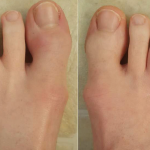 BALTIMORE—These timeless words from Sir William Osler, one of the preeminent physicians of the 19th and early 20th centuries, are often worth reflecting on as we consider how best to stay up to date in the field of rheumatology. At the 17th Annual Advances in the Diagnosis and Treatment of the Rheumatic Diseases meeting at Johns Hopkins University School of Medicine, Baltimore, Ana-Maria Orbai, MD, MHS, assistant professor of medicine and director of the Psoriatic Arthritis Program at Johns Hopkins University School of Medicine, followed Osler’s advice and provided outstanding clinical pearls by telling several patient stories.
BALTIMORE—These timeless words from Sir William Osler, one of the preeminent physicians of the 19th and early 20th centuries, are often worth reflecting on as we consider how best to stay up to date in the field of rheumatology. At the 17th Annual Advances in the Diagnosis and Treatment of the Rheumatic Diseases meeting at Johns Hopkins University School of Medicine, Baltimore, Ana-Maria Orbai, MD, MHS, assistant professor of medicine and director of the Psoriatic Arthritis Program at Johns Hopkins University School of Medicine, followed Osler’s advice and provided outstanding clinical pearls by telling several patient stories.
Infection as a Trigger
Dr. Orbai began her lecture describing a 29-year-old grocery store clerk with a history of severe psoriatic arthritis (PsA) that included erosive arthritis, dactylitis, enthesitis, nail involvement and erythrodermic psoriasis as manifestations of his disease. Over the past year, he had experienced several complications related to both his worsening disease and sequelae of being on immunosuppressive medications.
When reflecting on his case, Dr. Orbai made the point that infection is a known trigger for flares in psoriatic disease. For example, strong evidence exists that a preceding tonsillar Streptococcus pyogenes infection can induce the onset of guttate psoriasis, and the exacerbation of psoriasis has been associated with skin and/or gut colonization by Staphylococcus aureus, Malassezia and Candida albicans.2
Acute infection should also be a consideration when evaluating for worsening arthritis or before committing to escalation of therapy. In this patient’s case, aspiration of a knee effusion revealed a white blood cell count of 135,000 cells/μL (normal range = 4,000–11,000 cells/μL), with 92% of these cells being polymorphonuclear lymphocytes. Although cultures from the synovial fluid did not yield bacteria growth, the clinical context and lab parameters were concerning for septic arthritis, and his condition was treated as such.
A review article from Siegel and Winthrop in 2019 noted that ustekinumab and biologics inhibiting interleukin (IL) 17 or IL-23 appear to have reduced infectious risk estimates compared with anti-tumor necrosis factor (TNF) therapies. The authors note that although infectious risks vary across biologics and small-molecule therapies for psoriasis and psoriatic arthritis, we still have limited real-world data to evaluate these risks.3
Recurrent Dactylitis
In a second patient story, Dr. Orbai described a 34-year-old office worker with PsA who had experienced recurrent dactylitis despite treatment with IL-12/23 inhibition, IL-17 inhibition and multiple anti-TNF therapies.
In discussing this patient, Dr. Orbai shared several important lessons, including: Dactylitis can occur in both the hands and the feet (and is, in fact, more common in the feet). Active disease can re-emerge even while a patient is on biologic treatment. Dactylitis is associated with radiographic progression. And flexor tenosynovitis is a common finding in patients with PsA.
A frequent radiographic feature of dactylitis is enhanced signal at digital entheses without accompanying synovitis or tenosynovitis. At the histologic level, hypervascular tenosynovium with a fibromyxoid expansion of fibrous tissue can be seen, and perivascular inflammation with a T cell predominance, specifically CD3+ T cells, can occur.4
TNF inhibitor-induced autoimmune hepatitis was a concern for this patient. While discussing the literature on this topic, Dr. Orbai noted this complication is more common in patients treated with etanercept, adalimumab and infliximab than in patients treated with golimumab or certolizumab. TNF inhibitor-induced autoimmune hepatitis is more common in women than in men, and when detected, the treatment approach is to discontinue the TNF inhibitor, follow liver function tests and immunoglobulins, and potentially consider corticosteroids and/or azathioprine if the disease warrants such treatments.5
Dual-Biologic Therapy
In the third patient story presented by Dr. Orbai, the concept of dual-biologic therapy was explored. This patient was a 45-year-old business owner with refractory PsA who was having breakthrough signs and symptoms of active disease despite treatment with guselkumab every eight weeks. Thus, using a shared decision-making model with the patient, certolizumab was added at weeks 4 and 6, between guselkumab doses.
Dr. Orbai pointed out that dual-biologic therapy is an off-label treatment and is not officially approved by the U.S. Food & Drug Administration. However, emerging literature describes dual therapy in the care of patients with psoriasis and PsA.6,7
In one report from this past year, Haberman et al. described the first reported case of severe PsA remission (without the appearance of an adverse event) in a biologic-naive patient using a dual anti-cytokine regimen. To justify this strategy, the authors explained that, “given the complex and heterogeneous nature of tissue involvement in [psoriatic arthritis], it seems biologically implausible that modulating individual pathways will suffice for the induction of deep, enduring clinical responses in all phenotypic domains [i.e., skin, synovium, entheses and axial].”6
In her presentation, Dr. Orbai noted that such dual-therapy strategies warrant further rigorous evaluation in clinical studies.
In Sum
To conclude her talk, Dr. Orbai left the audience with several take-home messages. First, she noted that psoriasis and PsA are on a continuum, and it is important to evaluate the various domains of disease for patients, such as synovitis, enthesitis, dactylitis, skin and nail disease.
Second, no diagnostic test exists for PsA, and diagnosis depends on the combination of historical, physical exam, lab and imaging features consistent with this disease.
Third, the significant heterogeneity among patients should compel physicians to treat each patient as a unique individual.
Fourth, many treatment options are currently available for PsA, and disease phenotype and trajectory of disease should be among the variables that influence which medications to use (for a list of these medications and considerations, see “Psoriatic Arthritis Treatment Update,” October 2021).
Finally, although up to about 60% of patients experience improvement while on treatment, only about 30% of patients will achieve remission.
Dr. Orbai’s session was a tour de force with regard to approaching PsA in an evidence-based and patient-centered manner.
Jason Liebowitz, MD, completed his fellowship in rheumatology at Johns Hopkins University, Baltimore, where he also earned his medical degree. He is currently in practice with Skylands Medical Group, N.J.
References
- The Four Founding Physicians. Johns Hopkins Medicine.
- Fry L, Baker BS. Triggering psoriasis: The role of infections and medications. Clin Dermatol. 2007 Nov-Dec;25(6):606–615.
- Siegel SAR, Winthrop KL. In the real world: Infections associated with biologic and small molecule therapies in psoriatic arthritis and psoriasis. Curr Rheumatol Rep. 2019 Jun 6;21(7):36.
- Tuttle KSL, Vargas SO, Callahan MJ, et al. Enthesitis as a component of dactylitis in psoriatic juvenile idiopathic arthritis: Histology of an established clinical entity. Pediatr Rheumatol Online J. 2015 Feb 28;13:7.
- Vollmer O, Felten R, Mertz P, et al. Characterization of auto-immune hepatitis associated with the use of anti-TNFα agents: An analysis of 389 cases in VigiBase. Autoimmun Rev. 2020 Mar;19(3):102460.
- Haberman RH, Castillo R, Scher JU. Induction of remission in biologic-naive, severe psoriasis and PsA with dual anti-cytokine combination. Rheumatology (Oxford). 2021 Jul 1;60(7):e225–e226.
- Thibodeaux Q, Ly K, Reddy V, et al. Dual biologic therapy for recalcitrant psoriasis and psoriatic arthritis. JAAD Case Rep. 2019 Oct 10;5(10):928–930.



